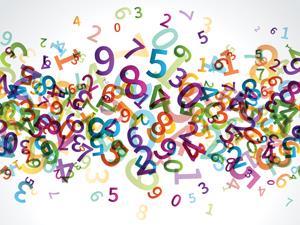In this week's post, I wish to start a discussion about how we teach maths for chemistry

If you want to get a good conversation going in the chemistry staffroom, bring up the issue of maths. No-one, it seems, is any good at maths any more. People will argue that it isn’t taught the way it used to be and students don’t know how to apply it to chemistry.
Different education systems have different requirements for maths at university level. In the Irish system, most if not all science courses would have entry requirements that mean students take maths to their final year in school. In the UK, some universities require maths at upper school level, others don’t. This means it is difficult to pinpoint where the problem – and there is a problem – lies.
Traditionally, science courses would have some mathematics modules in their early years. These are typically taught by mathematicians, and would cover algebra and calculus relevant for chemistry degree programmes. The last decade or so has seen the rise of “Maths for Chemistry” type modules on chemistry degree programmes. These are taught by chemists to chemistry students, and aim to show in a contextualised way various mathematical approaches relevant to chemistry programmes.
As someone who has had the (mis-)fortune to teach maths for chemistry modules for nearly 10 years, I’m not sure of their value, or at least whether they are a better way to do things compared to the traditional approach of learning mathematical methods from the mathematicians. Their value lies in harnessing an immediate relevancy of content: a discussion on algebraic approaches can turn a dry expression of x’s and y’s into an application of van der Waal’s equation. Integration can be used in the context of integrated rate laws. We finally have an answer to the perennial student question: “why do we need to know this?”
Whether this is successful is another issue. Is it too much to ask students to understand a mathematical approach along with the chemical relevancy of a particular example. Students struggling to grapple with the seemingly cryptic language of logarithms may not realise their value in linearising the Arrhenius equation. Essentially: is it too much at once?
This leads to the alternative approach: teaching students core mathematical competencies before we bring them into chemistry. The advantage here is that the experts in teaching maths – the mathematicians – can develop students understanding of various approaches required and this can then be picked up by the chemists. The problem with this approach is that students fail to see the relevancy and cannot translate it to chemistry examples when required.
This for me is the conundrum about teaching maths. Students need to know it (and let’s be honest: in a course not relying on quantum chemistry, they don’t really need to know very much), but the question of who and how it is taught is fraught with problems. One middle ground might be to work with the mathematicians and provide them with some examples in a chemistry context. Paul Yates’ series on Maths for Chemistry published regularly in Education in Chemistry is invaluable for this.
But I don’t really have an answer, and a decade on, still struggle to teach maths for chemistry. I am aware that this is a subject where there are many strongly held views from various sides of the debate, so with some trepidation I ask, what is the trouble with maths? And how can we address it?









1 Reader's comment